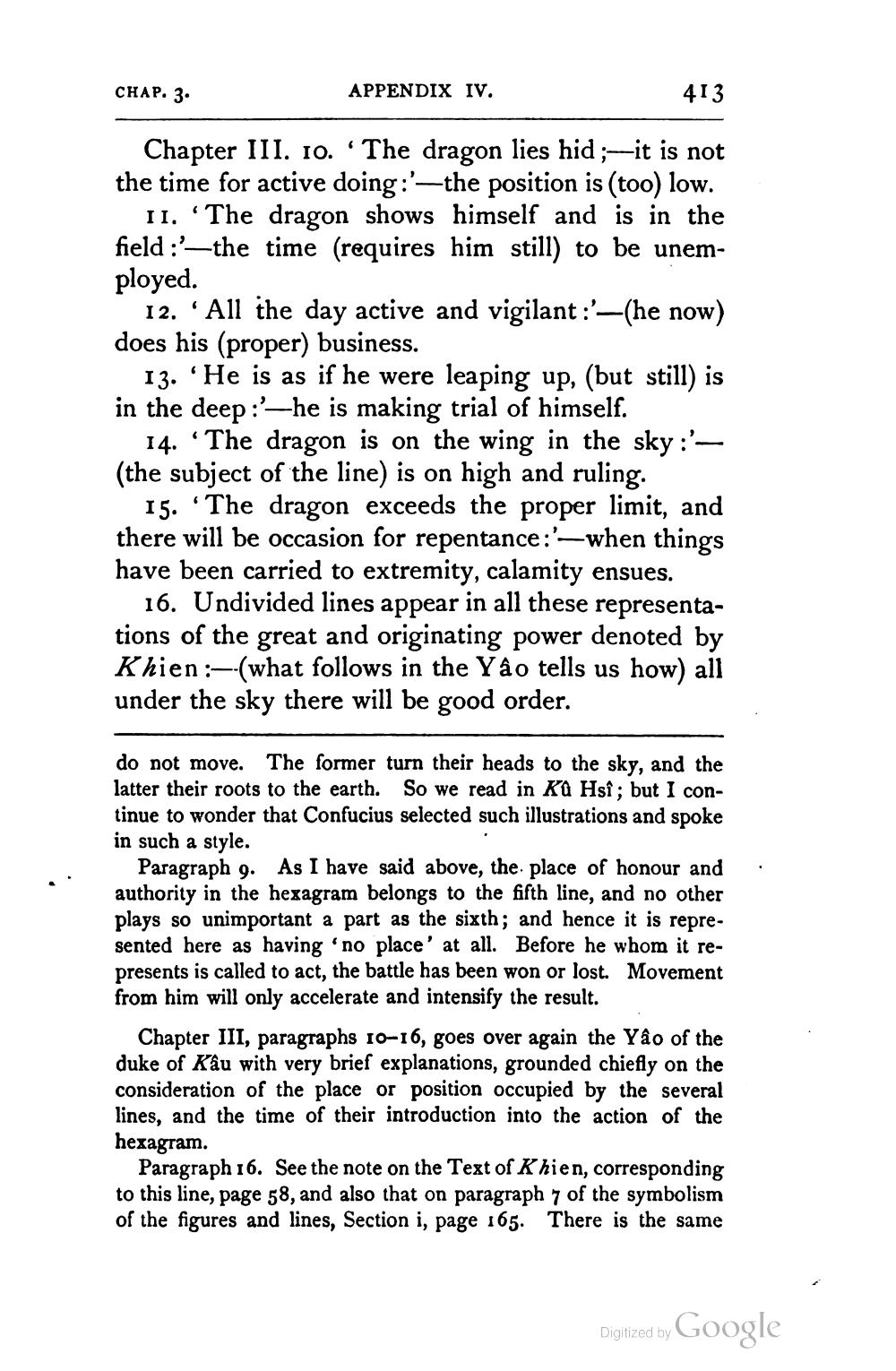________________
CHAP. 3.
APPENDIX IV.
413
Chapter III. 10. “The dragon lies hid ;-it is not the time for active doing :'—the position is (too) low.
11. 'The dragon shows himself and is in the field :—the time (requires him still) to be unemployed.
12. 'All the day active and vigilant:'-(he now) does his (proper) business.
13. 'He is as if he were leaping up, (but still) is in the deep :'-—he is making trial of himself.
14. “The dragon is on the wing in the sky :(the subject of the line) is on high and ruling.
15. The dragon exceeds the proper limit, and there will be occasion for repentance:'-—when things have been carried to extremity, calamity ensues.
16. Undivided lines appear in all these representations of the great and originating power denoted by Khien :-(what follows in the Yao tells us how) all under the sky there will be good order.
do not move. The former turn their heads to the sky, and the latter their roots to the earth. So we read in KU Hşî; but I continue to wonder that Confucius selected such illustrations and spoke in such a style.
Paragraph 9. As I have said above, the place of honour and authority in the hexagram belongs to the fifth line, and no other plays so unimportant a part as the sixth; and hence it is represented here as having 'no place' at all. Before he whom it represents is called to act, the battle has been won or lost. Movement from him will only accelerate and intensify the result.
Chapter III, paragraphs 10-16, goes over again the Yåo of the duke of Kâu with very brief explanations, grounded chiefly on the consideration of the place or position occupied by the several lines, and the time of their introduction into the action of the hexagram.
Paragraph 16. See the note on the Text of Khien, corresponding to this line, page 58, and also that on paragraph 7 of the symbolism of the figures and lines, Section i, page 165. There is the same
Digitized by Google




